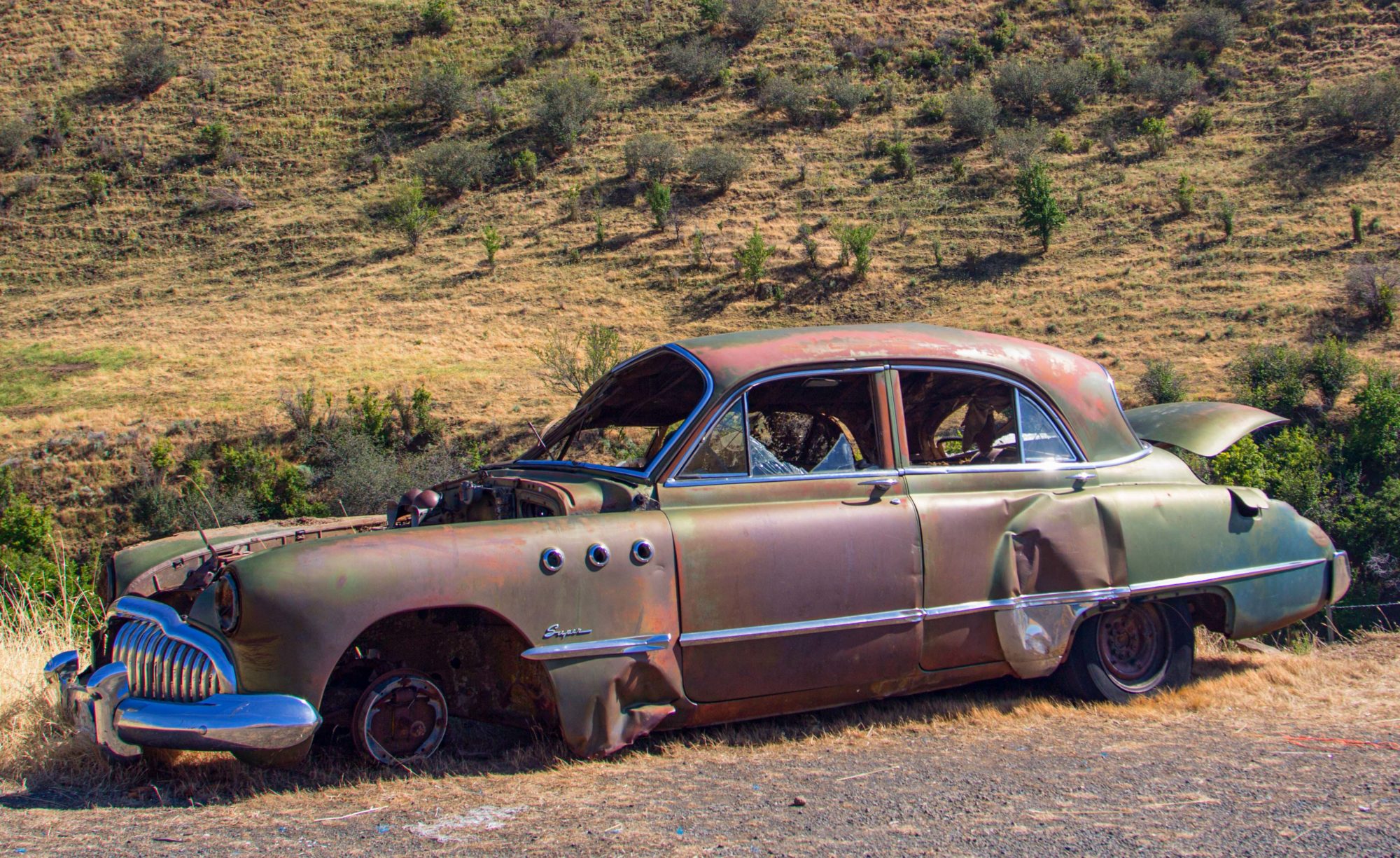One of the most fascinating landscapes I have witnessed is the Palouse region of Southeastern Washington. Green and gold waves roll gently across the open countryside. The smooth rolling hills take on even more characteristics as day washes away the night and when long evening shadows are consumed by darkness.
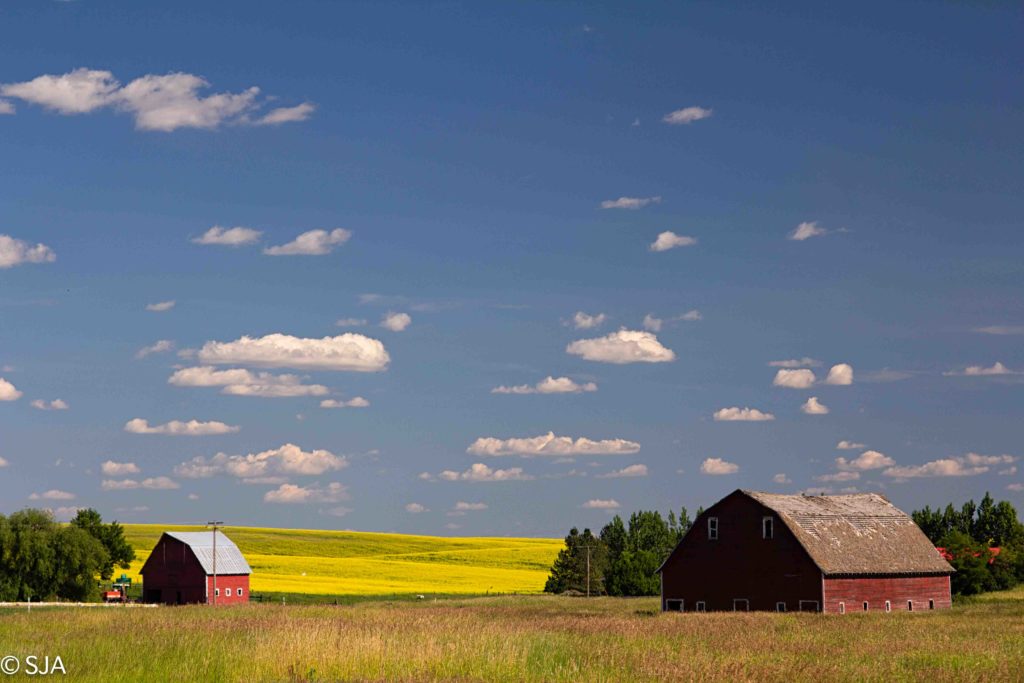
Yellow fields on the edge of the Palouse
When I travel, I don’t just look for places with gorgeous scenery, but places ripe with history and unique geology. The rolling hills of the Palouse is one of those places.
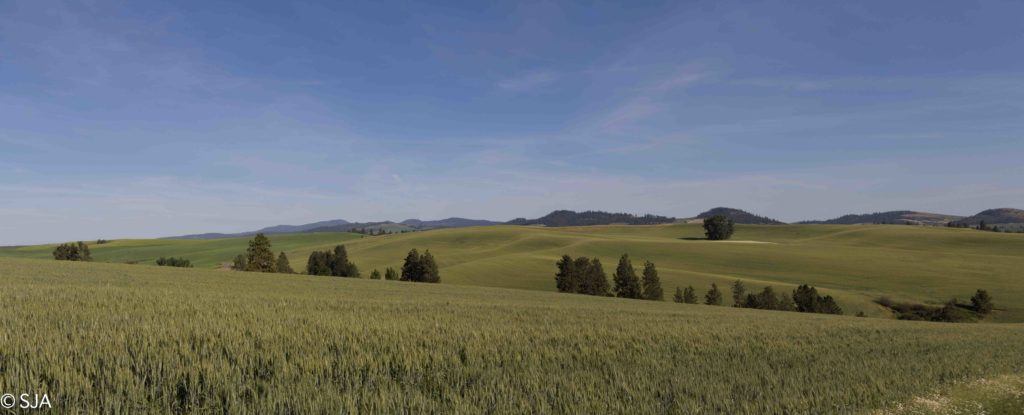
Green fields on the Palouse
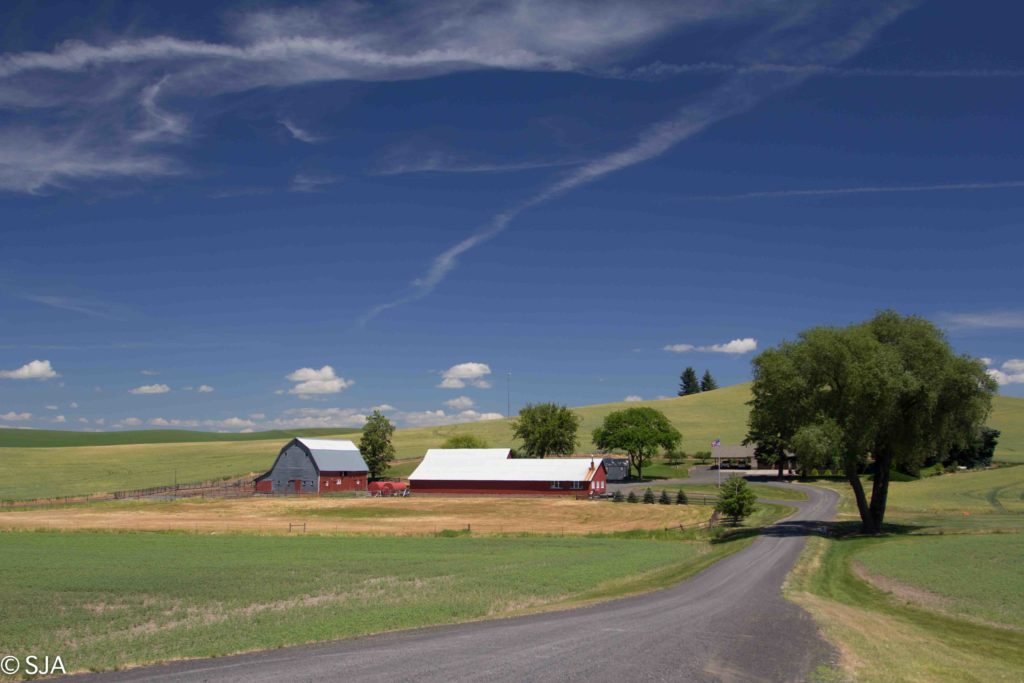
Farm on the Palouse
Historically, the Mullan Road ran through this area. In fact, a section of the original road can still be seen. That might not mean anything to most, but for me, it gives a better insight of those who traveled that road from Ft. Benton, Montana to Walla Walla, Washington. It was the first wagon road to cross the Rocky Mountains to the Inland of the Pacific Northwest. The road ran through Prickly Pear valley near Gates of the Mountains where the Gibson brothers, who married a couple of Brannin cousins, ran the toll gate for King & Gillette. The road went through Silver City (where my Grandmother was born) and crossed the pass near Helena before continuing west. My Great Grandfather Brannin traveled that same road when he worked for King & Gillette as a cook and sometimes as a driver of the team that pulled the supply wagon. It doesn’t take much for me to imagine seeing him with the team as he traveled the same area I was in.
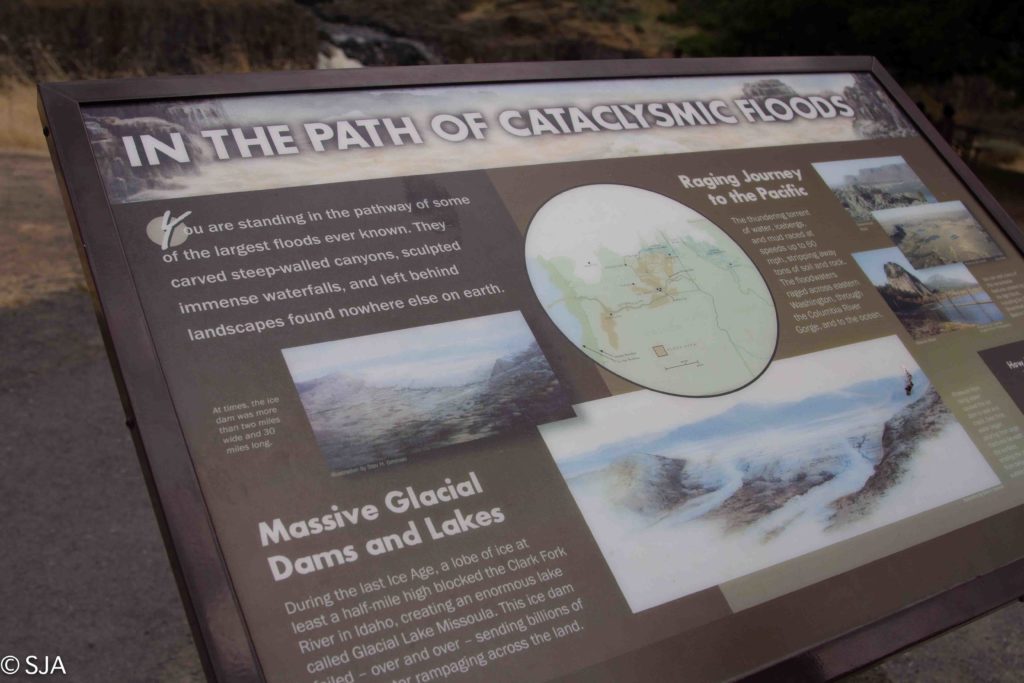
Events that formed the Palouse region
Geologically, this area is a unique jewel. Years ago, a glacial ice dam rose to 2000 feet high at the Montana Idaho border. The dam failed and flood waters rushed toward the Pacific Ocean. It left behind canyons and carved the Columbia River Gorge. Also, in its wake were a series of lakes. As the glaciers and flood waters advanced from Canada, the bedrock was crushed, creating a fine dust known as glacial flour. The lakes drained and left behind monumental quantities of silt. Southwestern winds blew. Loess dunes formed when windblown glacial flour, dust and silt settled in Southeastern Washington, Western Idaho, and Northeastern Oregon.

Fields of gold and green
The Palouse is one of the seven wonders of Washington State, and I can tell you, it is a wonder. Soft rolling fertile hills are covered with wheat and legume fields. Combines and other farm equipment follow the contour of the hills as they comb the slopes, cutting up to 100 acres of grain in a single day. The Palouse has the highest lentil production in the US and has increased its production of vineyards and wineries.
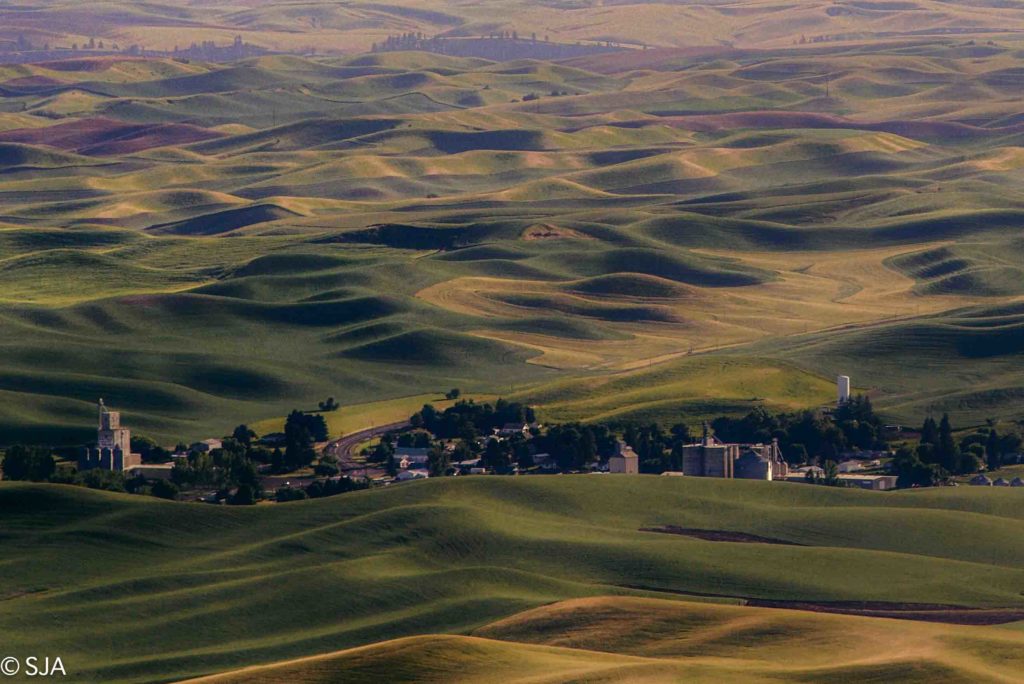
Community on the Palouse 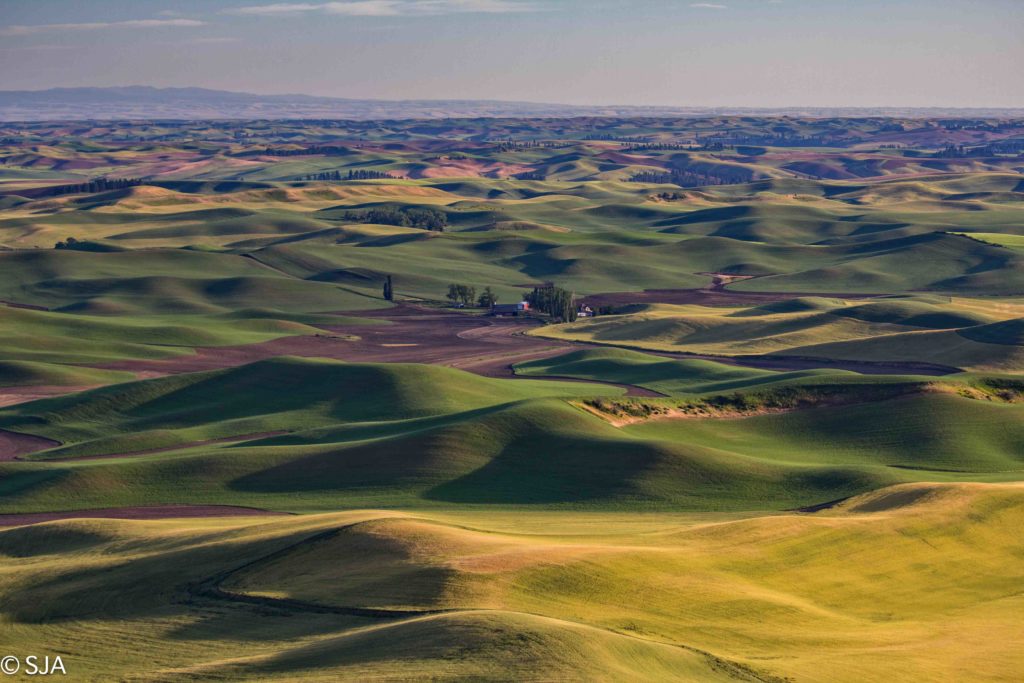
Shadows add definition and depth to the loess hills
Steptoe Butte, at 3,612 feet, rises like an island out of the loess hills. From its height, it offers panoramic views of the productive sea of farmland. Depending on the season, lush shades of green fields or shades of brown and gold roll like ocean waves in the valley below. Riparian areas attract a diversity of species of birds and provide the perfect breeding habitat.
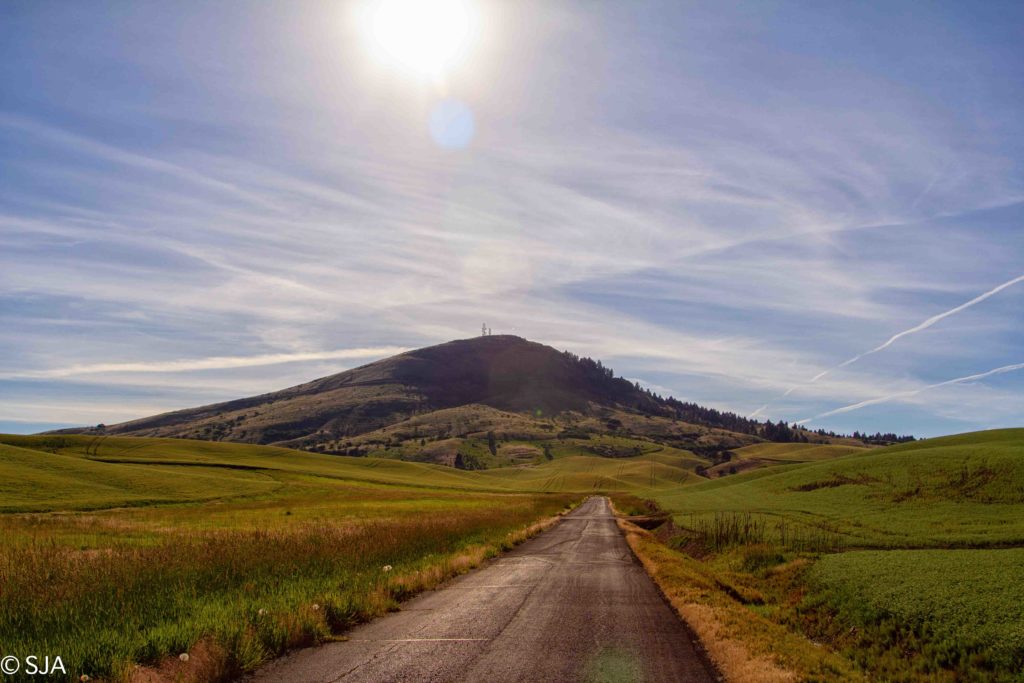
Steptoe Butte

View from the ascent to Steptoe Butte
There are various areas of basalt formations in the region. The Palouse River drops 200 feet and moves quickly through the winding basalt gorge and makes its way to the Snake River. Beside the falls is a series of broken basalt pipes that look like the workings of a pipe organ.
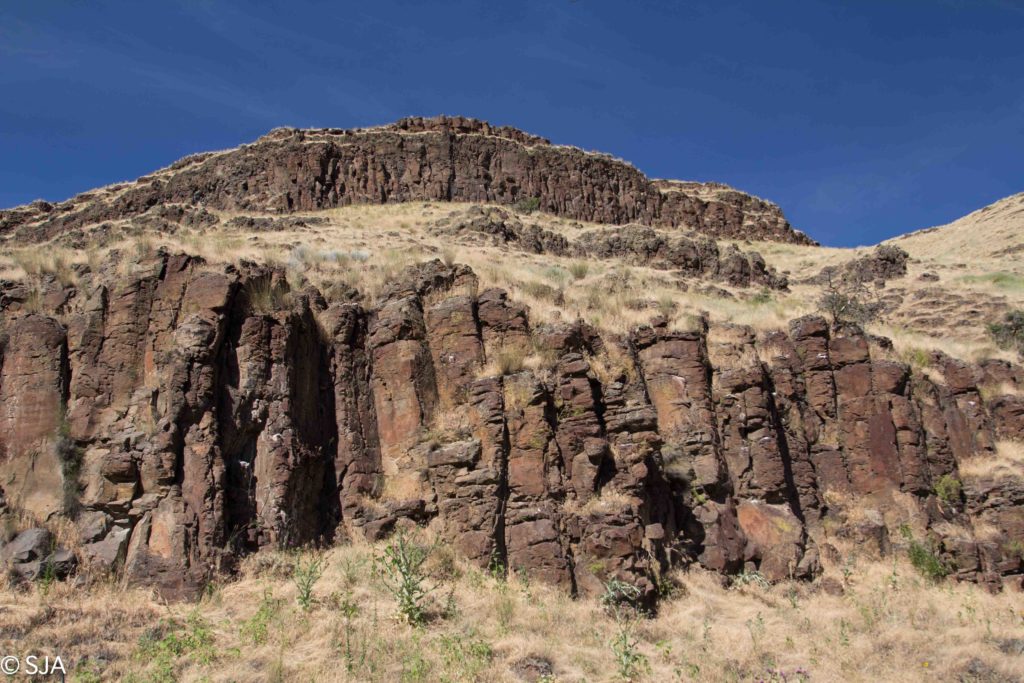
Basalt formations along the road
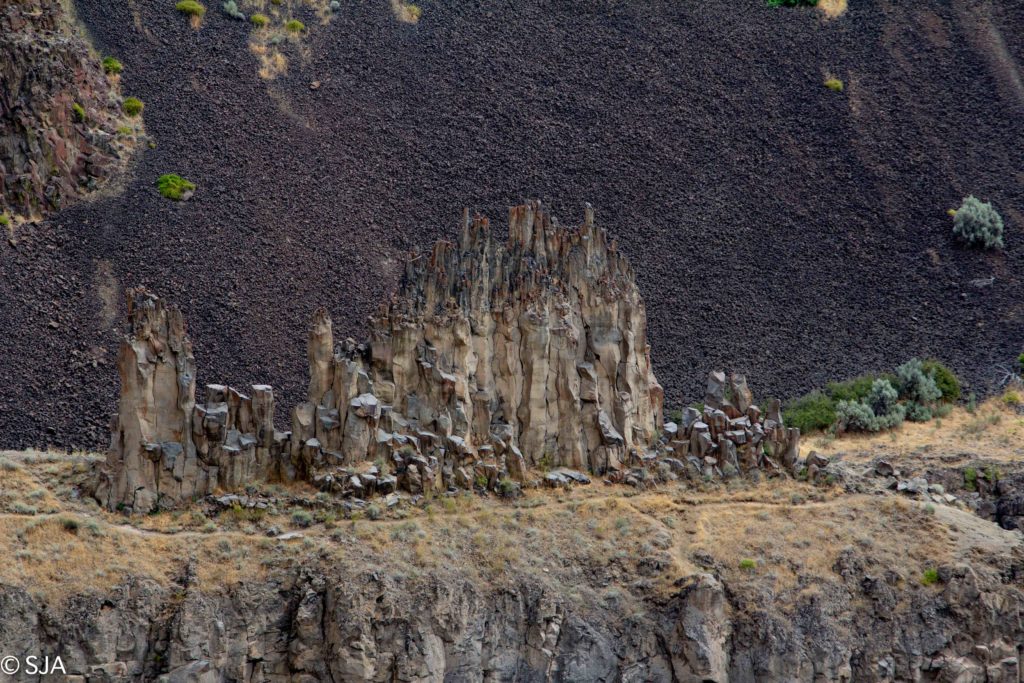
Broken basalt pipes that look like a pipe organ. See the trail around
the base of the pipes at the top of the falls?
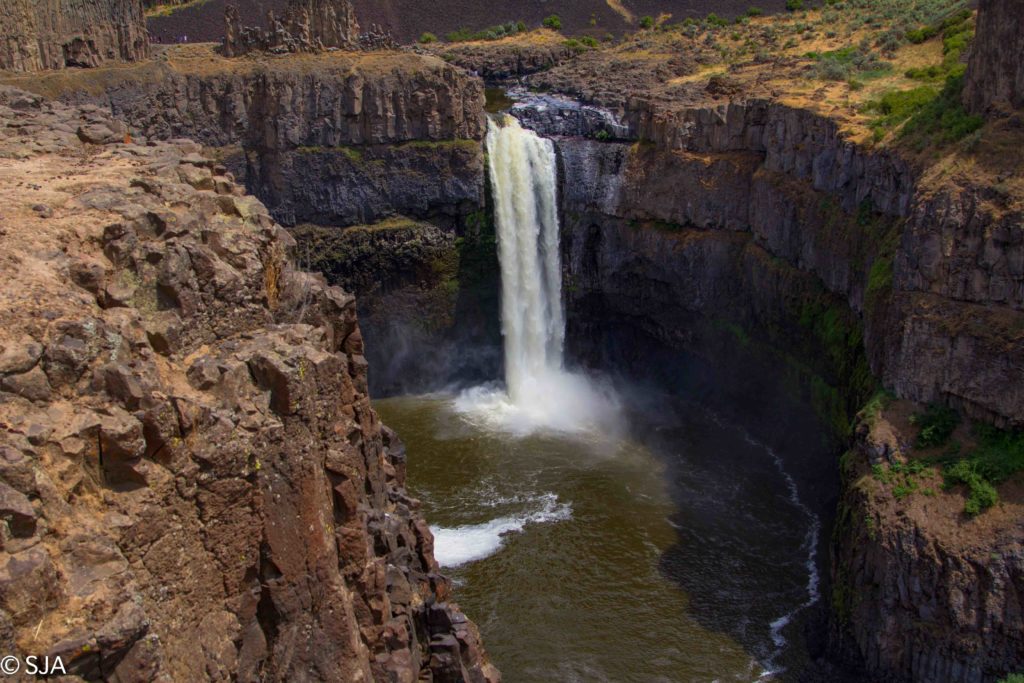
The Palouse Falls (note the basalt pipe formation just to the left at the top of the falls).
The Palouse is peaceful and serene. Soft rolling hills and muted blended colors give a sense of pastoral perfection to this verdant landscape. Just looking out over the loess dunes brings a calmness over my soul and renews my spirit. I believe our paths will cross again.
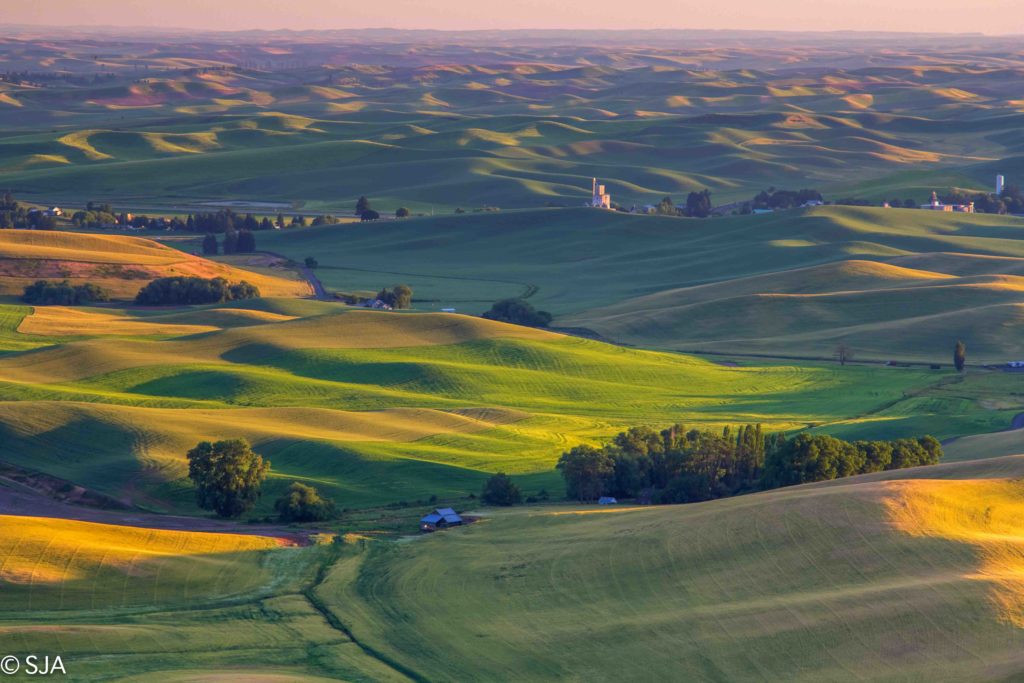
Long shadows of evening 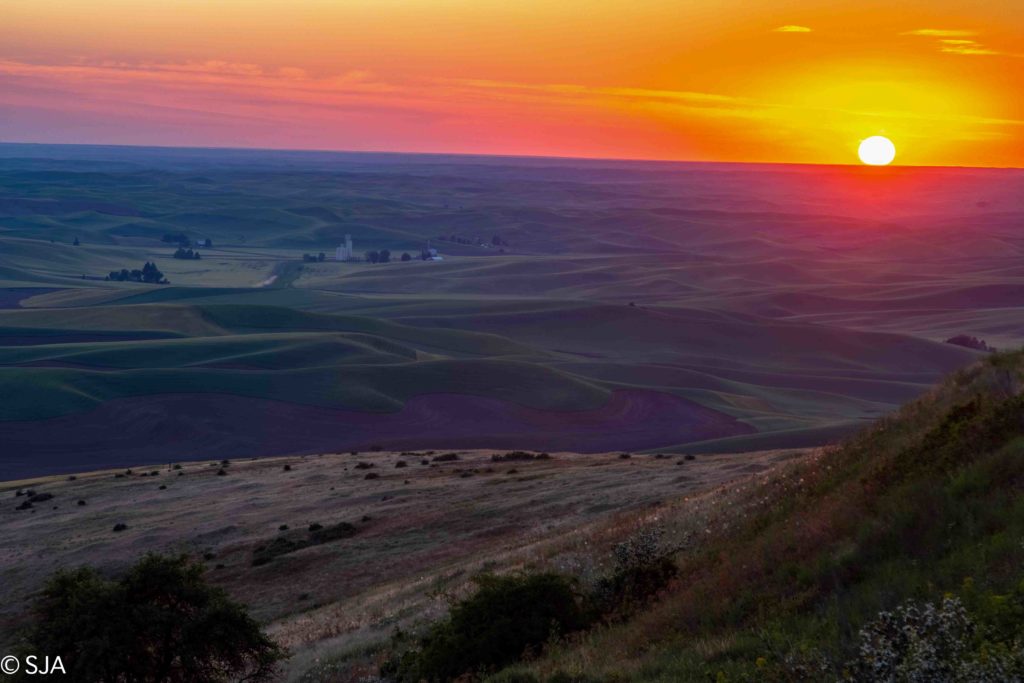
Sunset over the Palouse
